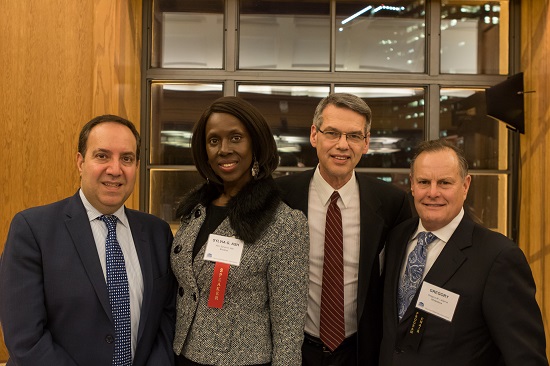Panel at Brooklyn Law School discusses Brooklyn’s increased commercial litigation

As the sun set through the windows of Downtown Brooklyn’s skyscrapers, a panel of speakers spoke about the Brooklyn courts’ newest influx of cases. With more development comes more commercial litigation.
The Commercial and Federal Litigation Section hosted a bench and bar meet and greet at Brooklyn Law School’s Subotnick Center on Thursday night to discuss how the new Brooklyn is affecting the court system. Its guests included Administrative Judge Lawrence Knipel, Supreme Court Justice Sylvia Ash and keynote speaker Carlo Scissura, president and CEO of the New York Building Congress.
“There’s no question about it: In recent years, Brooklyn has changed. It’s like walking on the moon,” Knipel told a crowd of dozens of litigators. “I’m committed and the Kings County courts are committed to fashioning a commercial division equal to the needs of today’s invigorated commercial environment.”

Brooklyn Boro
View MoreNew York City’s most populous borough, Brooklyn, is home to nearly 2.6 million residents. If Brooklyn were an independent city it would be the fourth largest city in the United States. While Brooklyn has become the epitome of ‘cool and hip’ in recent years, for those that were born here, raised families here and improved communities over the years, Brooklyn has never been ‘uncool’.